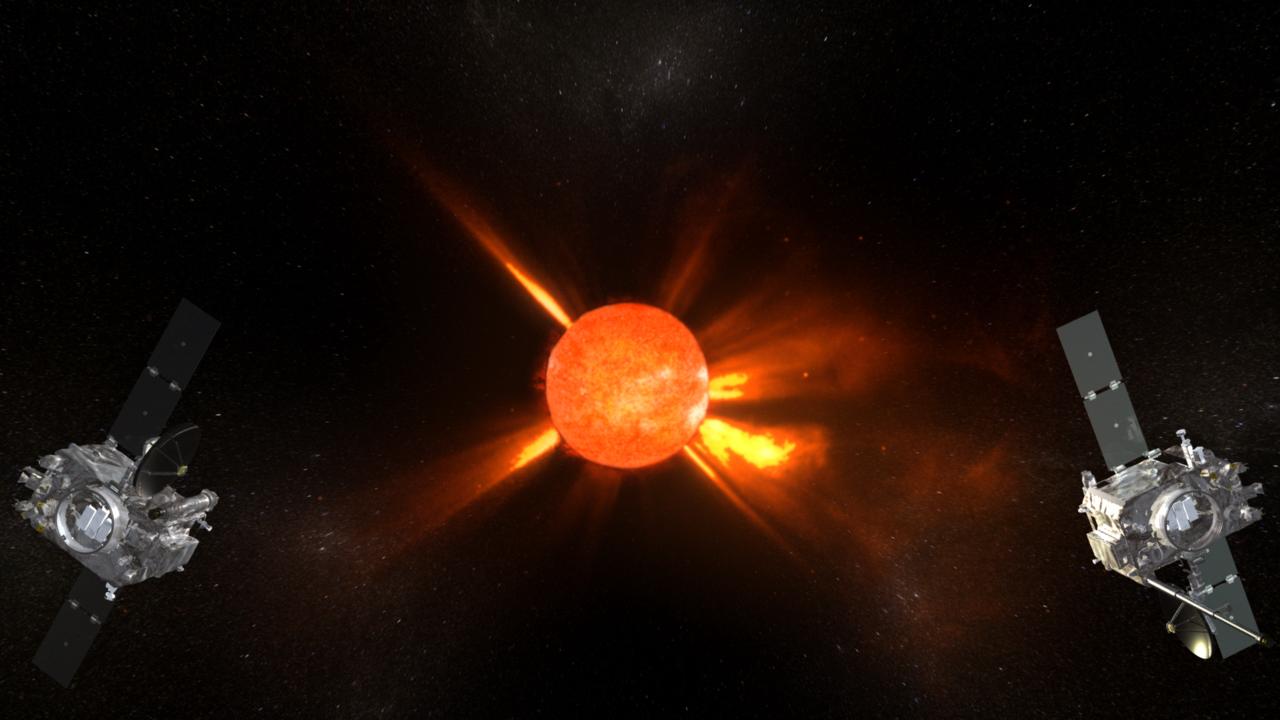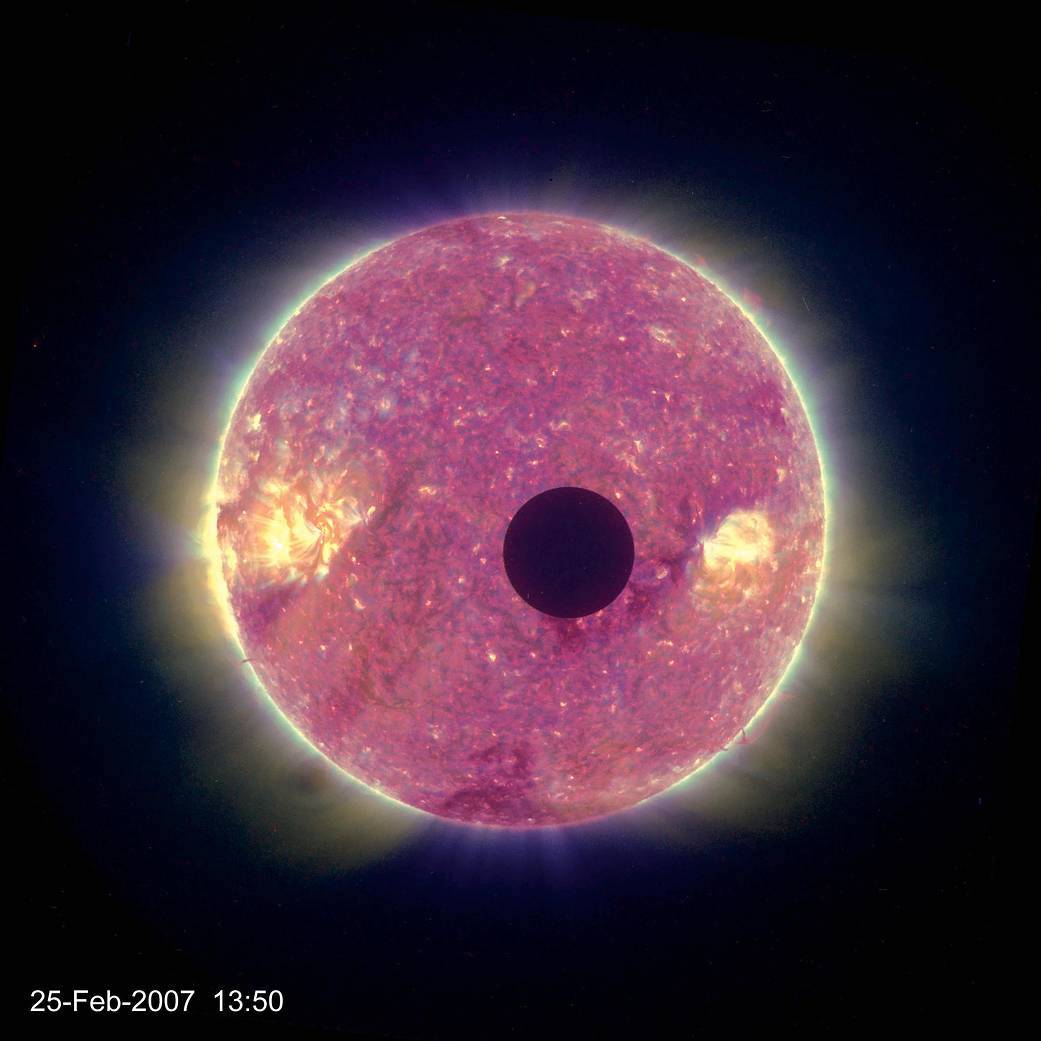NASA's STEREO mission: A quest to learn more about the sun
NASA's Solar Terrestrial Relations Observatory (STEREO) has been studying the sun for over a decade. The mission was originally composed of two nearly identical spacecraft, but lost one in 2014. The remaining satellite continues to make in-depth observations of the sun. The mission has provided a wealth of information about our nearest star.
A two-year mission
Launched on Oct. 25, 2006, from Cape Canaveral Air Force Station in Florida, the two golf-cart-size telescopes shared a single rocket into space. STEREO Ahead (A) entered an orbit around the sun slightly smaller than Earth, moving faster than our planet, while STEREO Behind (B) moved slightly slower than Earth while following a larger orbit around the sun.
"The separation of the two spacecraft has given us a unique multi-point perspective on solar activity on the sun and inner heliosphere simultaneously," NASA said.
STEREO's science objectives are the following:
- To understand how coronal mass ejections (CMEs) (the collections of plasma and charged particles blown from the sun) are born and how they function.
- Characterize how CMEs move through the heliosphere, the bubble-like sphere that surrounds and is powered by the sun.
- Discover how particles in the sun's lower atmosphere are accelerated through the interplanetary medium, or the scattered material that fills space between objects in the solar system.
- To understand the structure of the plasma and particles that make up the solar wind.
To accomplish these goals, the two spacecraft carry the following identical instruments:
- The Sun Earth Connection Coronal and Heliospheric Investigation (SECCHI) studies the 3D evolution of CMEs from their formation at the solar surface until they impact Earth.
- STEREO/WAVES (SWAVES) traces the generation and evolution of radio disturbances traveling from the sun to Earth's orbit.
- The In-Situ Measurements of Particles and CME Transients (IMPACT) samples the 3D distribution of the solar wind's plasma electrons, the characteristics of solar energetic particles (SEP) ions and the local magnetic field.
- The Plasma and Suprathermal Ion Composition (PLASTIC) measures the properties of the solar wind and evaluates the characteristics of protons, alpha particles and heavy ions in an effort to characterize the CME plasma.
Solar panels stretching about 21 feet (6.5 meters) off the spacecraft charge the batteries for the instruments.

Mission highlights
Over the last decade, STEREO revealed detailed information about the sun that allowed scientists to significantly improve their understanding.
"The mission has, for the first time, provided the first opportunity to observe and track the speed and changing structures of the solar storms from multiple positions using an array of instrumentation," NASA said.
The STEREO spacecraft began taking images on Dec. 20, 2006, and made its first 3D image of the sun in April 2007.
In February 2011, the twin spacecraft took up their positions on directly opposite sides of the sun and began to send uninterrupted images of the star back to Earth, providing the first views of the entire sun. Our nearest star rotates about once every 27 days, but solar activity changes on a faster scale. By combining images from STEREO A and B with NASA's Solar Dynamics Observatory (SDO), scientists were able to generate the first 360-degree maps of the entire sun in September 2012.
"For the first time ever, we can watch solar activity in its full 3-dimensional glory," Angelos Vourlidas, a member of the STEREO science team at the Naval Research Lab in Washington, D.C., said in a statement.
STEREO captured magnetic storms thrown off by the sun and revealed the interior processes in solar storms for the first time. The mission has tracked several solar storms from the sun to Earth.
Solar storms, flares and CMEs are each considered types of space weather, all generated by our star. The interaction of these charged particles with Earth's magnetic field can have a significant impact on satellites, power grids and other important systems. It's important to be able to prepare for these storms in advance, as such storms can cause power grids to fail.
In July 2012, the sun fired off the most powerful CME seen in 150 years. The charged particles barely missed Earth. "If the eruption had occurred only one week earlier, Earth would have been in the line of fire," solar scientist Daniel Baker of the University of Colorado said in a statement.
Instead, the CME struck STEREO A, which was built to ride out such storms and provide a wealth of information about them.
"Without the kind of coverage afforded by the STEREO mission, we as a society might have been blissfully ignorant of this remarkable solar storm," Baker said. "How many others of this scale have just happened to miss Earth and our space detection systems? This is a pressing question that needs answers."

Spinning out of control
Built for a two-year mission, STEREO wasn't designed to have the sun block the two spacecraft from contacting Earth for a sustained time, but STEREO's success encouraged NASA to extend the mission anyway. It was a risky decision, as the extended mission would mean that the spacecraft would each spend three months without communication with Earth.
As the engineers prepared STEREO B for its 2014 silence, they lost contact with the spacecraft briefly. When it rebooted, it could send only a faint signal that was eventually lost .
It seemed that the Inertial Measurement Unit (IMU), which tells the spacecraft if and how fast it's rotating, had failed and was incorrectly telling the spacecraft that it was in a spin. The resulting correction attempts left its solar panels dark and its battery only intermittently charged.
In August 2016, communications with the STEREO B were briefly re-established. The STEREO team worked to learn more about the spacecraft's state and how to recover it, but the uncontrolled orientation of the craft made it difficult to send and receive data, and contact was again lost. In 2018, NASA ended its periodic recovery operations.
In 2019, STEREO B should be far enough from the sun that it could be imaged with NASA's Hubble Space Telescope. That data should help engineers figure out STEREO B's rate of spin. The spacecraft is also drawing nearer to Earth. Our planet will lap STEREO B in 2023, which could make recovery easier. Until then, however, STEREO B remains silent.
The fate of STEREO A
While STEREO B struggled before and during its pass behind the sun, STEREO A sailed through with flying colors in 2015. According to the STEREO team, STEREO A's telescope continues to operate normally.
"STEREO's current mission extension was based on using just one spacecraft, so, regardless of what happens with STEREO B, the STEREO mission will provide robust solar research in the coming years," the team said on the STEREO B status update page.
STEREO A has continued to make discoveries about the sun despite the loss of its partner spacecraft.
In 2015, researchers used the STEREO A spacecraft to discover never-before-seen blast waves in the sun's atmosphere. The large-scale waves are accompanied by energetic particle emissions rich in helium-3, a light variety of inert helium gas. Waves spotted on the sun in combination with observations from the SDO have provided new insights into space weather forecasting.
Additional resources:
- An overview of the STEREO mission, from NASA.
- Watch NASA's video commemorating the STEREO mission's 10th anniversary.
- Check out the latest images from STEREO's SECCHI instrument.
Join our Space Forums to keep talking space on the latest missions, night sky and more! And if you have a news tip, correction or comment, let us know at: community@space.com.
Get the Space.com Newsletter
Breaking space news, the latest updates on rocket launches, skywatching events and more!

Nola Taylor Tillman is a contributing writer for Space.com. She loves all things space and astronomy-related, and enjoys the opportunity to learn more. She has a Bachelor’s degree in English and Astrophysics from Agnes Scott college and served as an intern at Sky & Telescope magazine. In her free time, she homeschools her four children. Follow her on Twitter at @NolaTRedd










